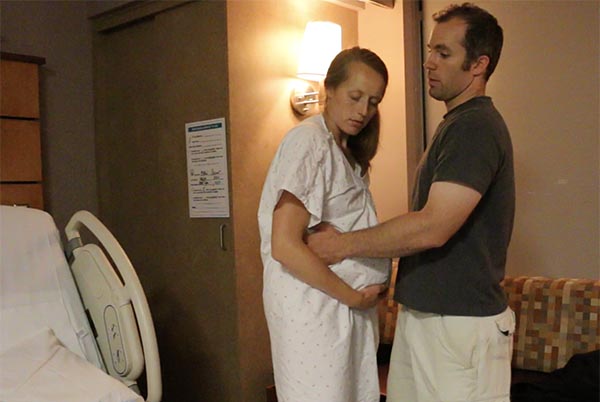
If you’re pregnant with your first baby, you might be feeling some trepidation about what happens during labor. Here’s a general overview of what you can expect in the first few hours of entering the hospital.
Estimated reading time: 6 minutes
This seems like an obvious first step, but it often requires some planning ahead. Some hospitals offer valet parking for laboring moms, while others require you to park and walk in. If you’re in active labor, you may have difficulty walking a long distance. Likewise you may not want to be left alone if you’re having strong contractions. This can put a wrench in your partner’s plan to drop you off, park, and meet you in the hospital.
Additionally, some hospitals require couples to enter through the Emergency Room or some other entrance if you enter the hospital in the middle of the night. Set yourself up for success by visiting the hospital together beforehand. Practice the easiest route to get there, find the L&D parking lot, and ask about their after-hours policies.
You can make the process of checking-in to the hospital significantly easier if you pre-register several weeks before your due date. You may be able to do this over the phone with a quick call to your birth facility. Pre-registering will enable you to share your contact and insurance information, complete paperwork, and ultimately speed up the process of admissions. Believe me, it’s a real hassle to search for your drivers license in the middle of a strong labor contraction! Best to avoid the inconvenience by pre-registering.

After admissions, you will usually go to a triage room, where you will receive your initial labor assessment. You may be asked to change into a hospital gown. Then, a nurse, doctor, or midwife will check your cervix. If you have a normal, low-risk pregnancy, you’ll usually be admitted after your cervix is 6 cm dilated. If the cervix is not 6 cm dilated, the nurse will often recheck an hour later to see if you’ve effaced or dilated since your last cervical check.
At this point, they’ll consult your doctor or midwife to see if you should continue with your early labor at home or in the hospital. Remember, if your goal is a natural or unmedicated birth, it’s often best to labor at home throughout early labor. So, try not to be discouraged if you do get sent home.
Assuming the triage nurse has assessed that you’re in active labor, you’ll be admitted to a room on the Labor & Delivery unit. Now is a good time for your partner to share your Birth Plan or Birth Preference sheet with your nurse. This will help her understand your plans and wishes for the birth of your baby.
I always recommend that couples take a tour of their birth facility during pregnancy. You can then be as familiar with the environment as possible. Most hospitals offer free tours of the L&D unit that must be scheduled in advance. Plan to do this about a month before your due date. Having visited beforehand, you’ll be familiar with the layout of the unit, the amenities of the room, and the birth tools that are available to you. Be sure to ask if they offer birth balls, labor tubs, squat bars, devices for playing relaxation scripts and music, and telemetry.

Unless your labor is so far progressed that you’re about to deliver your baby, the nurse will do a baseline health assessment. You will probably be asked you to stay in bed while they do this. The nurse will check your blood pressure, pulse, and temperature.
Next, they usually place electronic external fetal monitors on your abdomen to assess the baby’s heart rate. They leave these on for 20 minutes to establish a baseline of baby’s heart rate and mom’s contraction pattern. Lastly, the nurse will often place an IV hep-lock in your hand or arm and take a blood sample.

After that initial 20-minute fetal monitoring session is done, the nurse will leave the room. The nurse will re-enter periodically to check on you and to monitor the baby, but for most of your time in the hospital it will just be you and your birth support team. You may not see your doctor or midwife until much later in your labor; possibly not until you have the urge to push.
This is the room where you’ll give birth to your little one, so now claim your space and make it a calm and relaxing environment. If you desire, have your partner turn the lights down low. Maybe turn on your relaxation scripts or some other calming music. Surround yourself with your supportive birth team, and work to re-establish the calming labor groove you had at home before you left for the hospital.
By taking the time during your pregnancy to learn the basics of what happens during labor at the hospital, you will be prepared to welcome this new experience with calm and confidence. Best of luck to you, momma!
Kopa Birth’s online birthing classes allow you to prepare for natural childbirth in the comfort of your own home, 24/7. Enroll today in our free online childbirth class to learn more about preparing for natural childbirth.
If you’re pregnant with your first baby, you might be feeling some trepidation about what happens during labor. Here’s a general overview of what you can expect in the first few hours